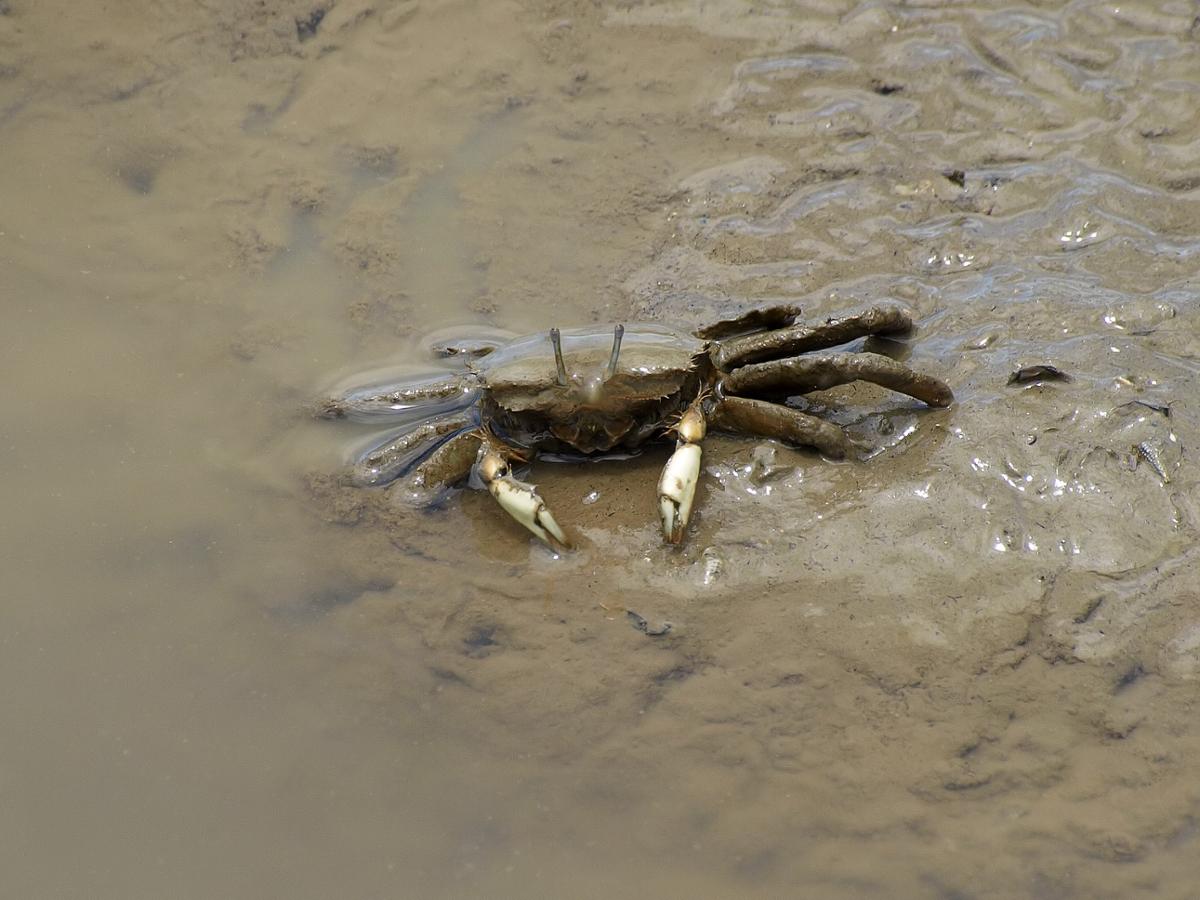D: You know, it’s a crab-eat-crab world out there, Yaël.
Y: That’s true, Don. Crabs do sometimes eat other crabs, especially when the other crab is of a different species. I think life is particularly tough for the small, soft-shelled crabs out there. Consider mud crabs: they’re about the size of a silver dollar, and their best defense is hiding.
D: How do they know when to hide? When they see a predator coming?
Y: Not quite. The waters where mud crabs live -- estuaries in Georgia for example -- are very murky. I don’t think sight is part of the equation. The sense the mud crabs use is smell: their own underwater version. Small hairs on their antennae, which, when swept back and forth, can detect chemical scents in the water around them.
D: Such as the scent of danger.
Y: Exactly.
D: But where does the scent of danger come from, Yaël? A dangerous situation?
Y: You’re right on the money, Don. In this case, the scent of danger comes from another mud crab that’s already been eaten and metabolized. Scientists studied the urine of a common mud-crab predator: the blue crab. They were able to compare the chemical profiles of blue crab urine after different meals, and identified over six-hundred chemicals. It probably comes as no surprise that the ones found most alarming to mud crabs – trigonelline and homarine – spike after the blue crab has just eaten a mud crab. It gives us some interesting insight into the chemical cues produced by predator-prey interactions underwater.










